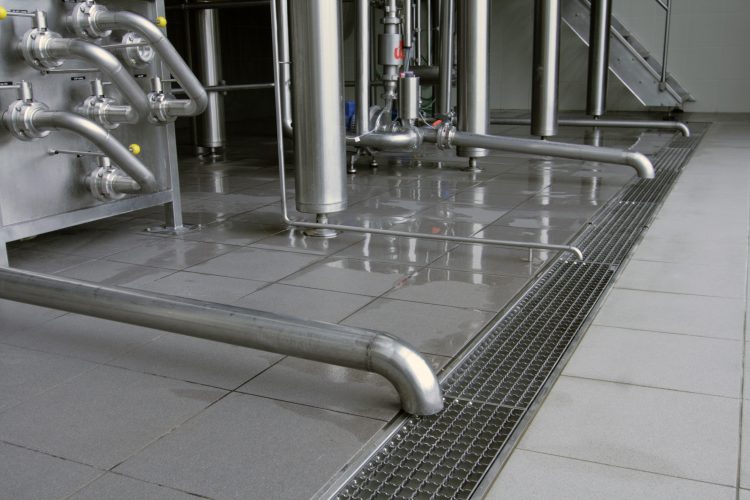Food safety by design
- Like
- Digg
- Del
- Tumblr
- VKontakte
- Buffer
- Love This
- Odnoklassniki
- Meneame
- Blogger
- Amazon
- Yahoo Mail
- Gmail
- AOL
- Newsvine
- HackerNews
- Evernote
- MySpace
- Mail.ru
- Viadeo
- Line
- Comments
- Yummly
- SMS
- Viber
- Telegram
- Subscribe
- Skype
- Facebook Messenger
- Kakao
- LiveJournal
- Yammer
- Edgar
- Fintel
- Mix
- Instapaper
- Copy Link
Posted: 21 November 2018 | Andy Buchan | No comments yet
The European Hygienic Engineering & Design Group World Congress takes place in the UK for the first time in November. Hygiene expert speaker and group member Andy Buchan explains why hygienic design could help save you from a food safety-related product recall.


What might seem to be common sense to the enlightened – particularly those in continental European countries such as Germany – is too often missed by many UK firms. By failing to adopt the latest best practices, companies are leaving themselves vulnerable to avoidable production-related food safety incidents. Failure to properly address these issues could not only prove costly, but might – in the worst instances – bring about their downfall and seriously impact public health.
This was the core motivation behind the establishment of the European Hygienic Engineering & Design Group (EHEDG) in 1989: the recognition by experts in various disciplines – from microbiology and equipment engineering to building design and internal infrastructure – that, due to changing consumer demand for potentially high-risk products such as ready-to-eat foods, combined with evolving and newly emerging pathogens and reduced resistance among populations to bugs, production designs and layouts needed to improve.
EHEDG is a consortium of equipment and chemical manufacturers, food and drink manufacturers, retailers, research institutes and public health authorities that is dedicated to the promotion of hygienic design in every aspect of food and drink production. To date, EHEDG comprises 430 companies and 60 universities, institutes and authorities. This group has access to over 1,400 key industry representatives from 55 countries – from the U.S. to China – that constitute a significant global food safety network.
It is an organisation made up of experts, who provide their time on a voluntary basis with the common aim of making food safer throughout the world. While the guidelines that EHEDG produces and the advice it offers do not have legislative backing, its expertise is used to help shape legislation and is well recognised, particularly by businesses in continental Europe that readily adopt the knowledge to protect themselves from risk and to enhance their safety culture.
“In continental Europe, EHEDG is recognised to a greater extent than in the UK,” says Eric Partington, chairman of the UK and Ireland regional section of EHEDG, set up in 2014. “Ensuring the application of hygienic design in food and drink equipment and in production environments seems obvious but when you ask many people to think of it themselves they don’t.”
Partington cites the example of food processing equipment that was presented at a UK food and drink exhibition he attended a year or two ago.
“On one side of an aisle was a manufacturer that understood the principles of hygienic design and was showing equipment that was well designed and made from good materials, while across the aisle was another that featured a stainless-steel bowl with all sorts of nuts and bolts extending into the food area,” explains Partington.
“How are you going to clean that?” he asked. “The issues are obvious if you think about them, but sadly many organisations do not and this particular equipment manufacturer didn’t recognise the potential problem.”
EHEDG World Congress
Attendance at this year’s EHEDG World Congress in the UK could potentially change this regrettable situation. As the organisers, we want this congress to put EHEDG on the map in the UK. It represents a real learning opportunity– particularly for smaller companies that don’t necessarily have the resources for in-house development and engineering.
There will be 19 presentations and two keynote speeches by global experts on a range of topics, all of which are designed to improve food safety. The organisers expect 350-400 delegates from the UK and overseas to attend the event. The formal presentations will be complemented by poster sessions outlining the latest research findings in hygienic design. At a congress dinner taking place on the first evening, EHEDG will also present its hygienic study awards, which recognise excellence in research.
“The global interest in hygienic engineering and design is growing and food producers, scientists, legislators and equipment manufacturers from all over the world acknowledge its benefits,” says EHEDG president Ludvig Josefsberg, a senior director with Tetra Pak Processing Systems in Sweden. “We are therefore looking forward to welcoming our growing community on the occasion of our 6th World Congress in London to share our insights.”
To promote hygienic engineering and design in the UK, EHEDG is trying to work more closely with individual companies while developing relationships with universities such as Nottingham, Sheffield Hallam and Cardiff; as well as bodies such as the Institute of Food Science and Technology (IFST), the accrediting organisation for food science degrees in the UK; and research organisation Campden BRI.
Its entire focus is on hygienic design and mitigating risk by informing industry colleagues that information is readily available regarding how to do things better. By adopting best practice techniques, companies will avoid becoming the source of damaging product recalls caused by product contamination. Not only does EHEDG produce technical guidance documents, it also provides training and a forum for informed debate.
When EHEDG was first established back in 1989, it focused on obvious areas such as ensuring food contact surfaces, their materials of construction and surroundings were not easily contaminated with bacteria that could prove difficult to remove by cleaning. However, its scope has since evolved to include machinery, conveyor belt and factory design; the use of advanced materials; and preferred methods of cleaning. The engineering and infrastructure work involved has now become more sophisticated, focusing attention on those areas of risk that are less obvious.
Hygienic drainage
In terms of my speciality, drainage, EHEDG’s Document 44 launched at the end of 2017 represented a significant development. This guidance note was the first to emphasise the importance of infrastructure of food and drink manufacturing factories rather than focusing primarily on food processing machinery. It includes the need for good product design to avoid the build-up of biofilms and dangerous bacteria such as Listeria monocytogenes, as well as the need for correct drainage layout. For example; machinery that is positioned over the grating of a drain is difficult to clean since the grate cannot be easily removed.
It might seem an obvious mistake, but in my experience, it is not unusual. And there are many other similar design/set-up errors that can, and do, happen. The company at which I work has a philosophy that success is in the detail. It’s the little details that can trip you up and cause havoc from a hygiene perspective.
Consider the practice of power washing floors and drains – which is highly undesirable in my view, as any bacteria present will be turned into an aerosol that then coats all floor and wall surfaces with said bacteria. While it is not conducted by large processors that understand the associated risks, it is still carried out by some small food and drink processors.
In terms of infrastructure guidance, another piece of sensible advice – though frequently overlooked – is not to position lights over external doors to factories as this will attract moths and other insects at night. Instead, you should have the light located 20 metres away on a lamp post pointing at the door. This simple step enables factory operatives to open and close the door with a reduced risk of flying insects getting inside the food processing facility.
My presentation, entitled ‘Hygienic drainage – performance by design’, will explain the link between the primary risks to hygiene within the food and drinks processing environment and the risks associated with poor floor drainage. The reason for properly specified, installed and maintained drainage; the need for appropriate flooring; and the ongoing requirement for appropriate cleaning regimes will be covered. A combination of all three factors are necessary to ensure the right outcomes are achieved for food and drink processors.
Hygienic design is a process of continuous improvement because the environment in which companies operate will continue to change. In addition, there is now increased scrutiny of food and drink companies by the public and the media. Following recent high-profile cases, they must therefore be seen to be doing the right thing.
However, despite EHEDG’s best endeavours, problems associated with poor design persist. The reasons for this include the fact that not all players are adopting best practice. Secondly, there is failure by some to recognise that what they are doing poses a potential public health threat. An equally worrying obstacle relates to the commercial conflicts that can arise between cost and control, with the sad inevitability of some companies being prepared to take risks in order to minimise their costs and maximise their return on investment.
While nobody would deny the need for greater efficiencies, this should never be at the expense of good hygiene. However, from my experience, hygiene is not always put at the very top of food companies’ pyramid of priorities where it deserves to be.
The rest of this content is restricted - login or subscribe free to access


Why subscribe? Join our growing community of thousands of industry professionals and gain access to:
- bi-monthly issues in print and/or digital format
- case studies, whitepapers, webinars and industry-leading content
- breaking news and features
- our extensive online archive of thousands of articles and years of past issues
- ...And it's all free!
Click here to Subscribe today Login here







